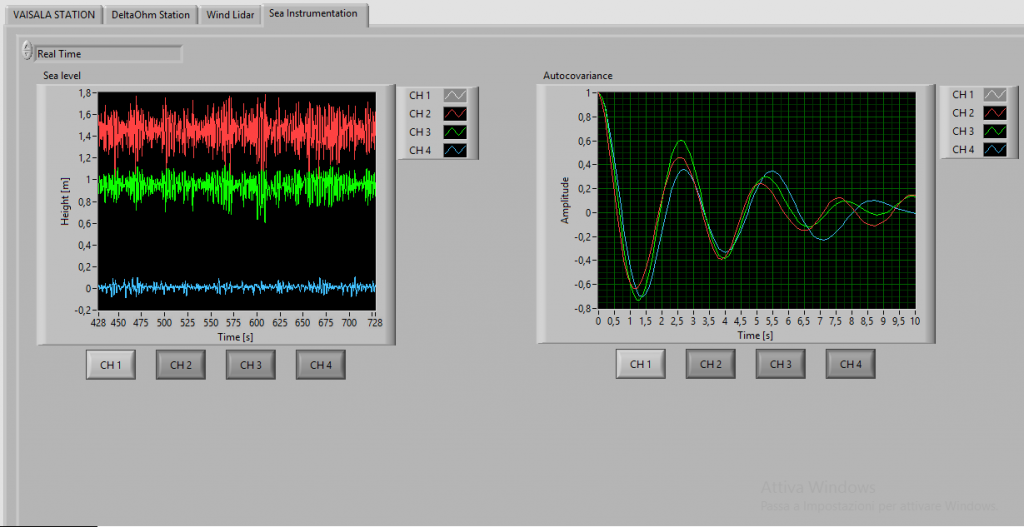The maritime construction and hydraulic measuring group has over a decade of experience in activities within water body in which the laboratory is located, having discovered that, with the necessary specifications, it can be used as a large naval tank.
Small waves generated by weak winds over a small fetch in Froude similarity represent scaled-down models of large waves. The normalized autocovariance function of surface waves in the modeled and in the real case is the same, which means that the model sea state and the real sea state have the same statistical properties, and therefore the model sea state produces in the scaled-down model the same stresses that the real sea state produces in the real structure.
Therefore, scaled-down models of maritime structures are usually carried out in Froude similarity and tested in laboratory tanks equipped with wave generators.
At sea, it is very difficult to find waves of small sizes (like those in the tank) that are also wind waves. Usually, waves of that size are a combination of wind waves and long waves (which are waves generated far from the observed area that preserve the generation period but with much smaller heights compared to when they were generated). However, even a small component of long waves can affect Froude similarity, so it is essential to identify sea states that are characteristic of pure wind waves.


In the stretch of sea in front of the laboratory, favorable conditions often occur that allow for experimentation at sea on reduced scale models. The first fundamental condition is that states of sea (consisting of pure wind waves) frequently form with typical dimensions resembling those of a large laboratory tank. It has been experimentally verified that, often, for several days each month, there are no long waves present in the sea. This is due to the concomitance of several favorable conditions:
1) the channel wind, blowing from the NNW (from Messina to Reggio), is very stable and, by counteracting the long sea waves that come from the south, often remains constant from morning to evening, generating states of sea consisting of pure wind waves that represent a scaled model, in Froude similarity, of oceanic storms;
2) the stretch of coastline in front of the city bends towards NE, resulting naturally protected from the long sea waves that come from the southern mouth of the Strait;
3) the relatively limited extension (10 km) of the fetch on which the channel wind acts;
4) a small variation in the tides, contained within 10 cm (the small tide excursion is a prerequisite for the execution of reduced-scale models);
5) the clarity of the water (assembly of instruments).
Working in a tank certainly allows for a controlled environment, and therefore defining the forcing within the tank limits. Additionally, there is the advantage of being able to mount instrumentation while emptying the tank, while in the sea, experience as a diver is necessary for managing experimental setups. On the other hand, there are disturbance effects in a tank, such as the reflection of the tank walls, that we do not have in the sea.
One significant problem is that the experiment’s forcing cannot be established in the model in the sea, but is decided by the wind, waves, and currents.
And so, a great effort is necessary to characterize the site through continuous monitoring systems in order to determine the periodicity, seasonality, and characteristics of different types of forcing.
